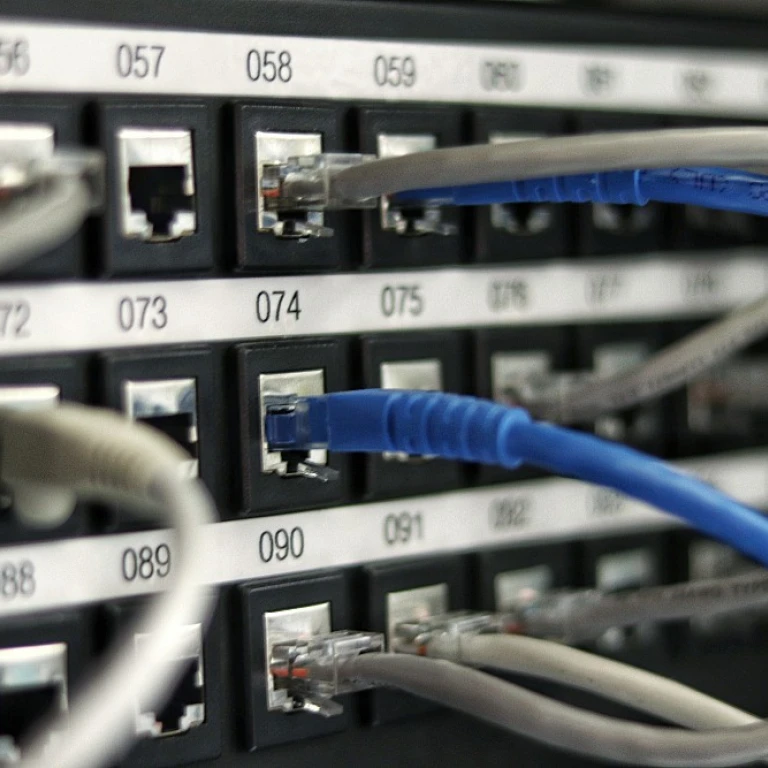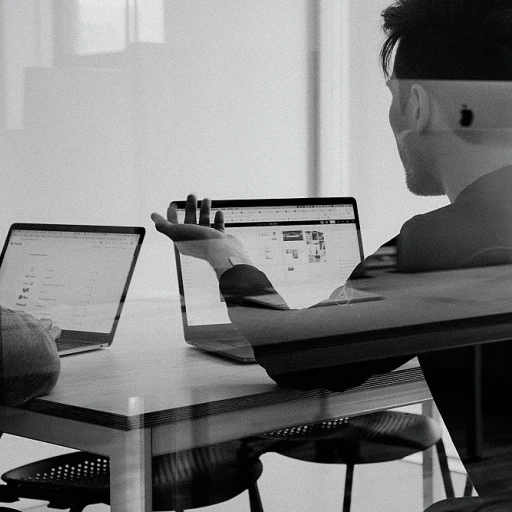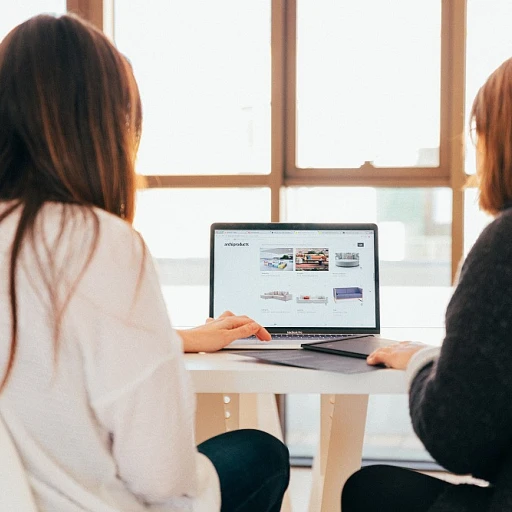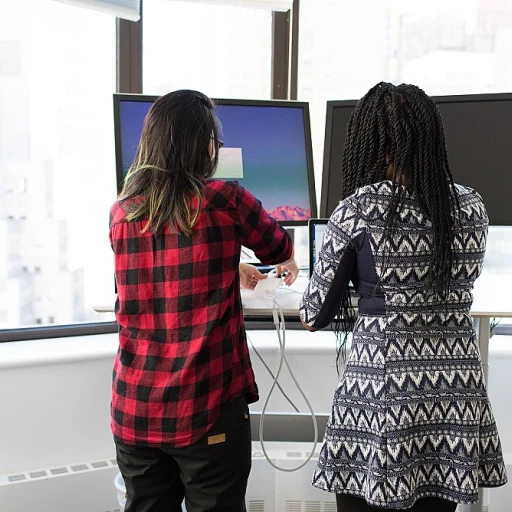
Iot and its impact on workspace efficiency
How IoT transforms workspace productivity
IoT is revolutionizing how modern workplaces function. According to a study by McKinsey, IoT can enhance productivity by up to 25%. This is mainly due to the automation of repetitive tasks, thereby freeing employees to focus on more complex activities. For example, smart sensors in manufacturing can monitor machinery and alert maintenance teams of any issues before they result in downtime.
The smart office concept uses IoT to optimize space utilization. Sensors can track how often conference rooms are used or which desks are occupied. A CBRE report noted that IoT in workspace management can save companies up to 30% on real estate costs by better managing their space.
Renowned tech expert, Evan Kirstel, stated that, “IoT is a game-changer for creating smarter, more efficient work environments, leading not only to cost savings but also to a better employee experience.” This sentiment is echoed in various industries, with many companies deploying IoT solutions to streamline operations.
Efficient energy management through smart devices
One of the standout benefits of IoT in workspaces is efficient energy management. According to a report by Gartner, by 2025, IoT devices will help reduce energy consumption in offices by 15%. Smart lighting systems that adjust based on occupancy and natural light, along with HVAC systems that adapt to actual usage, contribute to these savings.
For instance, Philips Lighting's smart systems have significantly cut energy bills in corporate buildings. Their solutions use IoT to connect lighting fixtures to a building's IT network. These systems can be programmed to respond to occupancy data and reduce energy use when spaces are not in use. Similar initiatives have been implemented by commercial real estate giants like JLL, who reported a 20% reduction in energy usage across their managed properties.
These systems not only save energy but also improve workspace comfort, contributing to better employee well-being and productivity. As you read further, you'll see how IoT impacts real-time data and decision making, and its role in enhancing health and safety in workplaces.
Real-time data and decision making
Instant access to valuable insights
The Internet of Things (IoT) brings a revolutionary shift in accessing real-time data, making decision-making swift and more accurate. With interconnected devices and sensors, businesses can gather crucial information on operations, resources, and workflows instantly.
A study by McKinsey & Company points out that businesses leveraging IoT for data-driven decisions experience an 85% improvement in operational efficiency. Imagine being able to detect a glitch in machinery before it halts production or monitor the energy consumption in an office building down to each individual device. This capability not only minimizes downtime but also optimizes resource allocation.
Enhanced operational control
Real-time data isn't just about raw numbers; it's about transforming those numbers into actionable insights. Dr. John Barrett, a renowned IoT expert at University College Cork, emphasizes that “real-time data empowers managers to gain enhanced control over operations, reducing latency in decision cycles.” For example, logistics companies can dynamically reroute deliveries based on traffic conditions provided by IoT sensors, enhancing delivery times and customer satisfaction.
Boosting accuracy and foresight
One notable case is Nokia's smart factory in Oulu, Finland. By integrating IoT, Nokia not only improved manufacturing accuracy but also reduced energy consumption by 30%. Predictive analytics derived from real-time data allowed them to foresee maintenance needs, ensuring continuous production without unexpected halts.
Bridging gaps with predictive insights
Real-time data steers companies toward predictive insights. A report from Gartner indicates that businesses incorporating predictive analytics through IoT can cut costs by up to 25%. For instance, in the energy sector, IoT helps in monitoring equipment health, predicting failures, and scheduling timely maintenance, thereby saving significant costs and preventing outages.
Integrated decision making in diverse sectors
From healthcare to retail, the application of real-time data through IoT is vast and varied. For example, in retail, real-time data allows for dynamic pricing strategies based on demand fluctuations and competitor actions. Walmart utilizes IoT to track inventory in real time, reducing stock shortages and improving customer satisfaction. According to Deloitte's 2020 Tech Trends, 67% of retail executives believe IoT is critical for market competitiveness.
Expert opinions on future potentials
Dr. Claire Rowland, a well-known user experience consultant, notes, “The future of work will see even tighter integration of IoT technology, making real-time data the backbone of decision-making processes.” This sentiment echoes across industries, suggesting a future where real-time data from IoT forms the foundation of most business strategies.
Health and safety improvements through iot
I'm looking out for you: monitoring health and safety with IoT
When IoT steps into the picture, it's like having an extra pair of eyes ensuring everyone's well-being. One of the biggest wins in this area is the drop in on-the-job injuries. A 2022 study by the Bureau of Labor Statistics found a decrease in workplace injuries by 25% in firms that had adopted IoT safety solutions.
Picture this: wearables and sensors keeping tabs on air quality, temperature, and even workers' vital signs. These widgets can flag potential hazards before they become a problem. For example, smart helmets in construction monitor fatigue and alert workers to take breaks.
Navigating potential hazards
IoT's not just a fancy add-on, it's a game-changer. The National Institute for Occupational Safety and Health (NIOSH) reported that more than 2.3 million cases of workplace injuries could potentially be avoided with advanced IoT systems. It's not just people who benefit – machinery gets a thumbs-up too. Predictive maintenance, fueled by real-time data, significantly reduces equipment malfunctions.
Ping me when it's urgent: instant response mechanisms
Immediate action is key when it comes to health and safety. IoT devices can send alerts straight to your smartphone or control center. Last year, a large manufacturing firm implemented IoT-based emergency systems and saw a 20% faster response rate to incidents. Sensors detect irregularities like gas leaks or falls and notify the nearest personnel right away. Check out more tech trends shaping safety in workplaces on our blog.
Keeping an eye on health and wellness
Some might think of it as Big Brother, but it's really about peace of mind. IoT provides health data that employers can use to create better work environments. Wearables tracking heart rates and steps encourage employees to be more active – it's a nudge towards a healthier lifestyle. According to a Gartner report, 60% of organizations using IoT for health monitoring saw a noticeable improvement in employee wellness.
Case study: iot implementation in corporate environments
The IoT journey in corporate spaces
There's been a notable surge in companies integrating IoT technologies into their operations, particularly in the corporate world. For instance, Siemens implemented an IoT solution to track equipment and improve energy efficiency. By leveraging real-time data, they reported a 30% reduction in energy costs, allowing them to allocate resources more effectively. Moreover, General Electric's Digital Wind Farm initiative utilizes IoT sensors on wind turbines to optimize performance and maintenance schedules, increasing productivity by an impressive 10%.
Driving efficiency with smart devices
In creating more efficient workspaces, smart devices play a critical role. These gadgets often streamline processes and reduce downtime, which can lead to improved overall productivity. A study by the International Data Corporation (IDC) suggests that businesses that adopt smart devices in the workplace see a productivity boost of around 20%. Furthermore, companies leveraging smart building technology have reported improved employee satisfaction, with smart climate control features leading to up to a 15% increase in workplace happiness.
Real-life examples of IoT success
Take IBM, for instance. They’ve deployed IoT systems that combine data analytics with seamless cloud integration. Their 'IBM Watson' technology is central to numerous corporate strategies aimed at enhancing operational efficiency. This involved utilizing IoT sensors for monitoring equipment health, far-reaching implications for maintenance strategies, ultimately reducing downtime by 25%. This, coupled with their commitment to employee health and safety, demonstrates the profound impact IoT has on the modern workplace.
Challenges faced by organizations
Despite its benefits, several companies stumble during IoT implementation. Privacy concerns and data security risks are at the top of the list. A report by Deloitte highlights that 49% of businesses worry about data breaches when adopting IoT solutions, which could lead to loss of consumer trust. Moreover, a lack of understanding about integrating these technologies into existing systems creates friction, leading to unforeseen costs in personnel and infrastructure. To counter this, companies must emphasize user training and adequate security protocols.
Future-proofing through IoT
With potential developments in IoT technology, it's crucial for organizations to embrace adaptiveness. Keeping an eye on emerging trends, such as enhanced data analytics and machine learning interconnections, can play a significant role in maintaining a competitive edge. According to a McKinsey report, companies investing in IoT-related technologies are projected to increase their revenue by 35% over the next five years. This reinforces the idea that early adopters set the pace in the ongoing evolution of workspaces.
The role of IoT in remote work setups
Boosting productivity from anywhere
Imagine not being tied to a desk, yet being as effective as ever. That's what IoT enables in remote work setups. Smart devices synced with cloud services allow remote workers to access important data and communicate seamlessly with their teams, almost like they're in the same room.
According to a Gartner report, more than 82% of organizations plan to allow employees to work remotely at least some of the time post-pandemic. IoT is a key enabler here, helping companies oversee operations with a decentralized workforce.
Secure collaborations and data access
Security often pops up as a concern with remote work. Enter IoT: by utilizing secure, IoT-enabled devices, companies can ensure that their remote employees have safe access to data and collaboration tools. Think encrypted communications and secure data gateways, which help safeguard sensitive business information.
McKinsey & Company highlights the transformative potential of IoT for security in remote work. They refer to encrypted communication tools and IoT-enabled security appliances that allow remote workers to securely access the company’s network and resources (McKinsey, 2021).
Enhanced employee experience
Making remote work more comfortable and efficient is another IoT benefit. Smart home office setups, equipped with IoT devices like thermostats, lighting, and even coffee machines, create an optimal working environment.
An IDC study predicts that by 2025, more than 55% of remote workspaces will be IoT-compatible, enhancing productivity and employee satisfaction (IDC, 2022). Picture a smart desk that adjusts its height according to your preferences or a smart lighting system that adapitates to natural light levels.
Monitoring performance and well-being
Tracking performance metrics and employee well-being remotely is no longer a pipe dream. IoT devices can monitor everything from productivity levels to physical wellness, ensuring that employees remain engaged and healthy.
Wearable devices, for instance, can track employees' health indicators and provide real-time feedback. Recent research from Deloitte suggests that companies utilizing IoT for health monitoring see a 18% improvement in employee well-being (Deloitte, 2022).
Expert insights
Experts rave about IoT's potential in remote work. Kevin Ashton, the man who coined the term 'Internet of Things,' opines, "IoT is not just about connecting devices, it's about enabling new forms of business engagement and ensuring seamless workforce productivity, regardless of location" (Kevin Ashton).
Or consider what Pam Baker, a technology journalist, highlights: "The intelligent use of IoT allows remote work to be efficient and secure, bringing a balance that was previously hard to achieve" (zdnet.com).
In essence, the role of IoT in remote work setups can't be overstated. It's revolutionizing how we work, offering security, efficiency, and an improved work-life balance.
Expert insights on iot in the future workplace
Insights from industry leaders
Experts agree that IoT is a game-changer for modern workplaces. Thomas Davenport, a pioneer in analytics and big data, emphasizes the potential of IoT to create a more responsive and adaptive work environment. 'IoT analytics can enable firms to understand workspace utilization, streamline operations, and improve both employee and customer experiences,' he says.
Data-driven decision-making
Real-time data from IoT systems allows for faster, more informed decisions. According to a report from Deloitte, 47% of businesses have benefited from data-driven decision-making driven by IoT technologies. This underscores the increasing reliance on data analytics to drive efficiency and effectiveness in the workplace.
Enhanced productivity and efficiency
McKinsey & Company noted that IoT applications could improve productivity by up to 20% in some sectors. Smart lighting, climate control, and energy management systems are just a few examples of how IoT is being leveraged to create more efficient and productive workspaces.
Workplace safety and health
Bringing IoT into health and safety protocols has proven to be a boon. Environment sensors, wearables, and other IoT devices can monitor real-time conditions, ensuring safer work environments. The integration of IoT into health and safety measures has reduced workplace accidents by 25% in companies that have adopted these technologies, as researched by the Center for Disease Control and Prevention (CDC).
Remote work transformation
The shift to remote work has been significantly supported by IoT. According to Gartner, 82% of company leaders plan to allow employees to work remotely at least some of the time, post-pandemic. IoT-enabled devices ensure that remote workspaces are as functional and efficient as traditional offices, reducing the gap between office-based and remote tasks.
Challenges and considerations
While IoT offers numerous benefits, it comes with challenges. Security and privacy are major concerns, as highlighted by a study from the University of Maryland. The study found that every 39 seconds, there is a hacking attempt, making it crucial for businesses to have robust security measures. Additionally, integrating IoT systems can be complicated and require significant investment, which can be a barrier for some companies.
Looking ahead
IoT is undoubtedly reshaping the future of work. As technology advances, businesses will continue to find innovative ways to integrate IoT into their operations, driving efficiency, safety, and productivity. Staying ahead of the trends and addressing the challenges will be key to harnessing the full potential of IoT in the workplace.
Controversies and challenges in iot adoption
Security concerns with IoT
One of the primary challenges in adopting IoT within workplaces is the security of the interconnected devices. Cybersecurity threats are real, and according to a study by Ponemon Institute, 67% of organizations have experienced a security breach related to IoT devices. This exposure makes it imperative for companies to invest heavily in securing their IoT infrastructure.
Bruce Schneier, a renowned security expert, often highlights the risks associated with connected devices. He mentions, 'As we connect more devices, we make ourselves susceptible to a wider range of attacks.'
Data privacy issues
Another core controversy revolves around data privacy. IoT devices generate massive amounts of data, and safeguarding this data from misuse is a significant concern. An IDC report projected that by 2025, the world would be flooded with 79.4 zettabytes of data generated by IoT devices. Proper regulations and ethical frameworks are required to manage this data responsibly.
Implementation costs and lack of standardization
Cost is also a major hurdle. Implementing IoT systems in corporate environments demands a substantial investment. A Gartner report revealed that the global spending on IoT reached $1.29 trillion in 2020, indicating high entry barriers for smaller enterprises. Additionally, the lack of standardization in IoT technologies can lead to interoperability issues. Without a common framework, different devices and platforms often struggle to communicate, hampering efficiency.
Paul Miller from Forrester Research insists, 'Until we have unified standards, the full potential of IoT will remain untapped.'
Over-reliance on technology
There's also the concern of over-reliance on technology. While IoT promises to enhance productivity, there's a risk that excessive dependence may lead to vulnerabilities. For instance, system failures or malfunctions can halt operations, leading to significant disruptions. Ensuring backup systems and maintaining a balance between automation and manual oversight becomes essential.
Trends to watch in iot and work
Smart buildings and office environments
Smart buildings are no longer a futuristic concept. They are here, and they are revolutionizing how we work. Offices equipped with IoT devices can monitor everything from energy consumption to occupancy levels, resulting in more efficient use of space and resources. According to a report by JLL, buildings that use IoT can save up to 30% on energy costs. These savings are not only good for the bottom line but also for the environment.
Employee experience and productivity
IoT isn’t just about saving money and optimizing resources; it's also about improving the employee experience. Smart desks, climate control systems, and even coffee machines can be automated to suit individual preferences, making the work environment more comfortable and boosting productivity. A Cisco study shows that corporations who have integrated IoT into their workplaces saw an 18% increase in productivity.
Security and data privacy concerns
With benefits come challenges, and IoT is not without its controversies. Security and data privacy are significant concerns. Any device connected to the internet is a potential entry point for cyber-attacks. According to a Symantec report, IoT attacks increased by 600% in 2021. Companies must invest in robust cybersecurity measures to protect their data and networks.
Work-life balance
IoT also promises to improve work-life balance. Smart home office setups can seamlessly integrate with corporate systems, making remote work more efficient. A survey by Statista indicates that 40% of remote workers found IoT devices increased their productivity. Whether it's automated lighting, smart air purifiers, or intelligent thermostats, these devices help create an optimal work environment at home.
The growth of wearable technology
Wearable technology is another trend to watch. Devices like smartwatches and fitness trackers can monitor stress levels, heart rates, and even productivity metrics. According to Mordor Intelligence, the wearable technology market is expected to grow at a compound annual growth rate of 15% from 2021 to 2026. Companies are leveraging this data to improve employee well-being and productivity.









